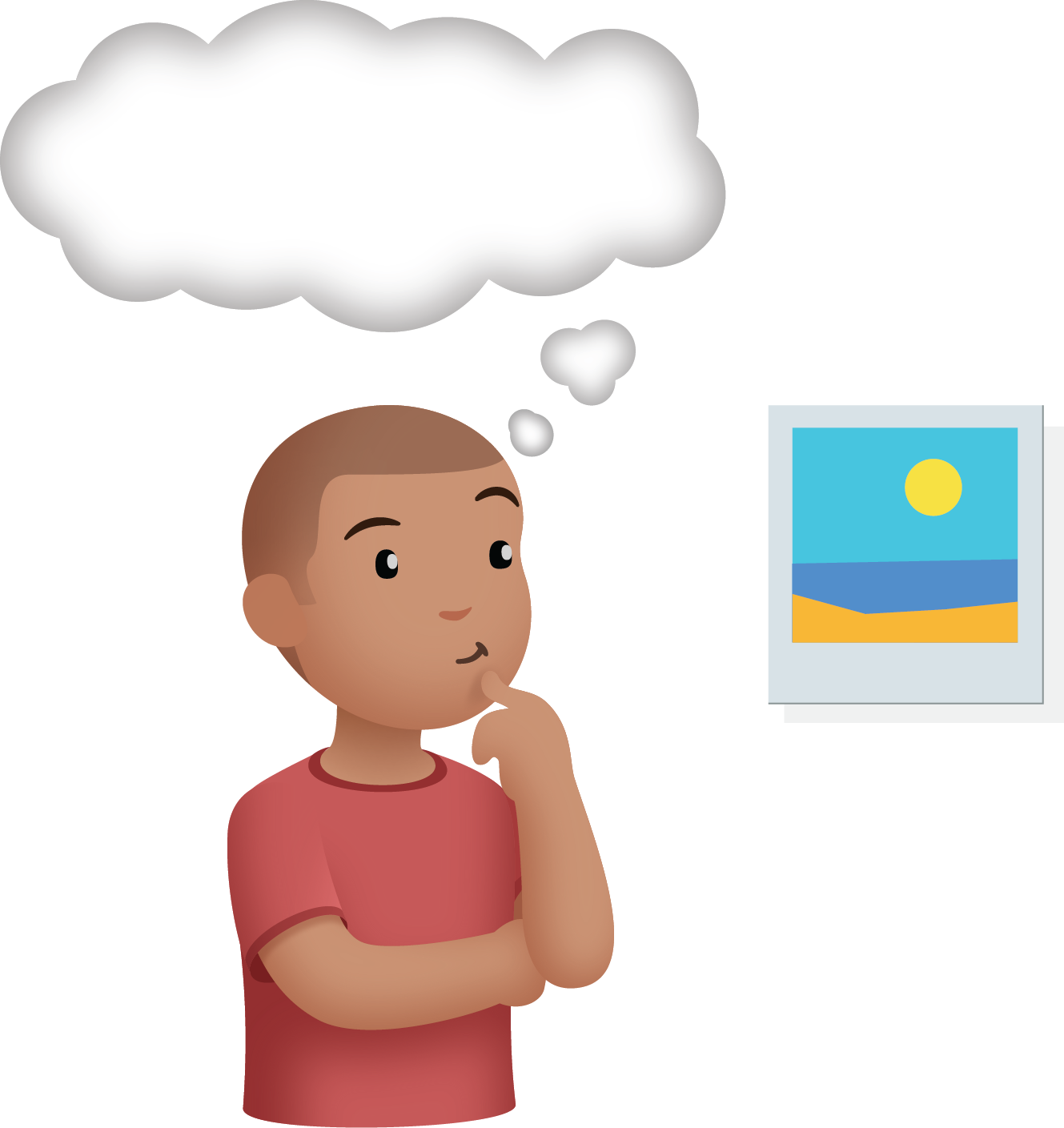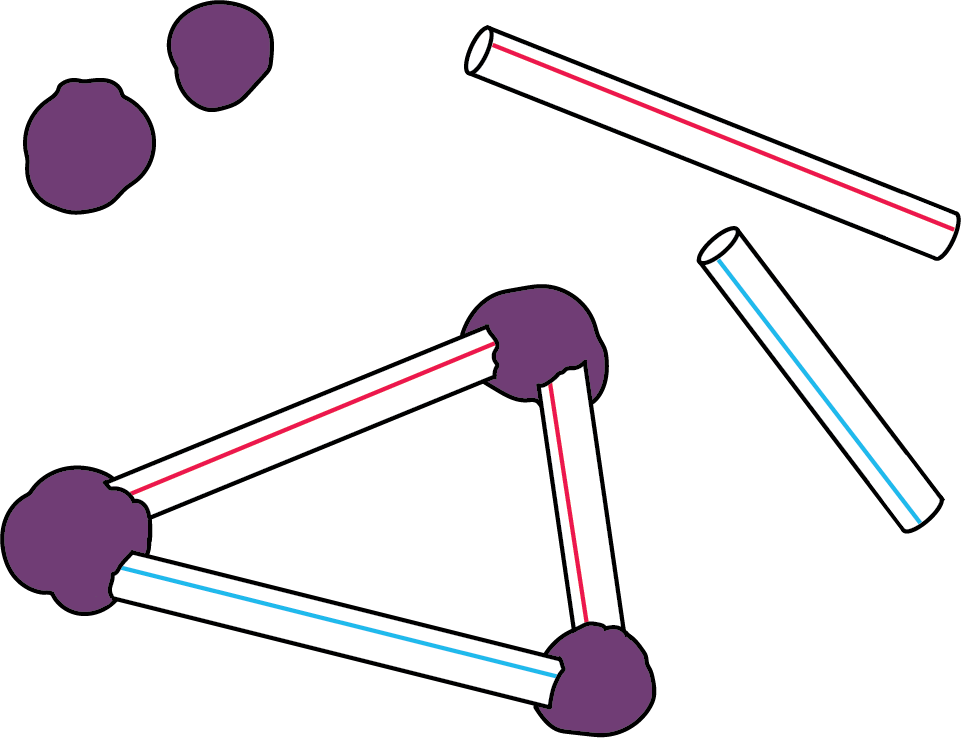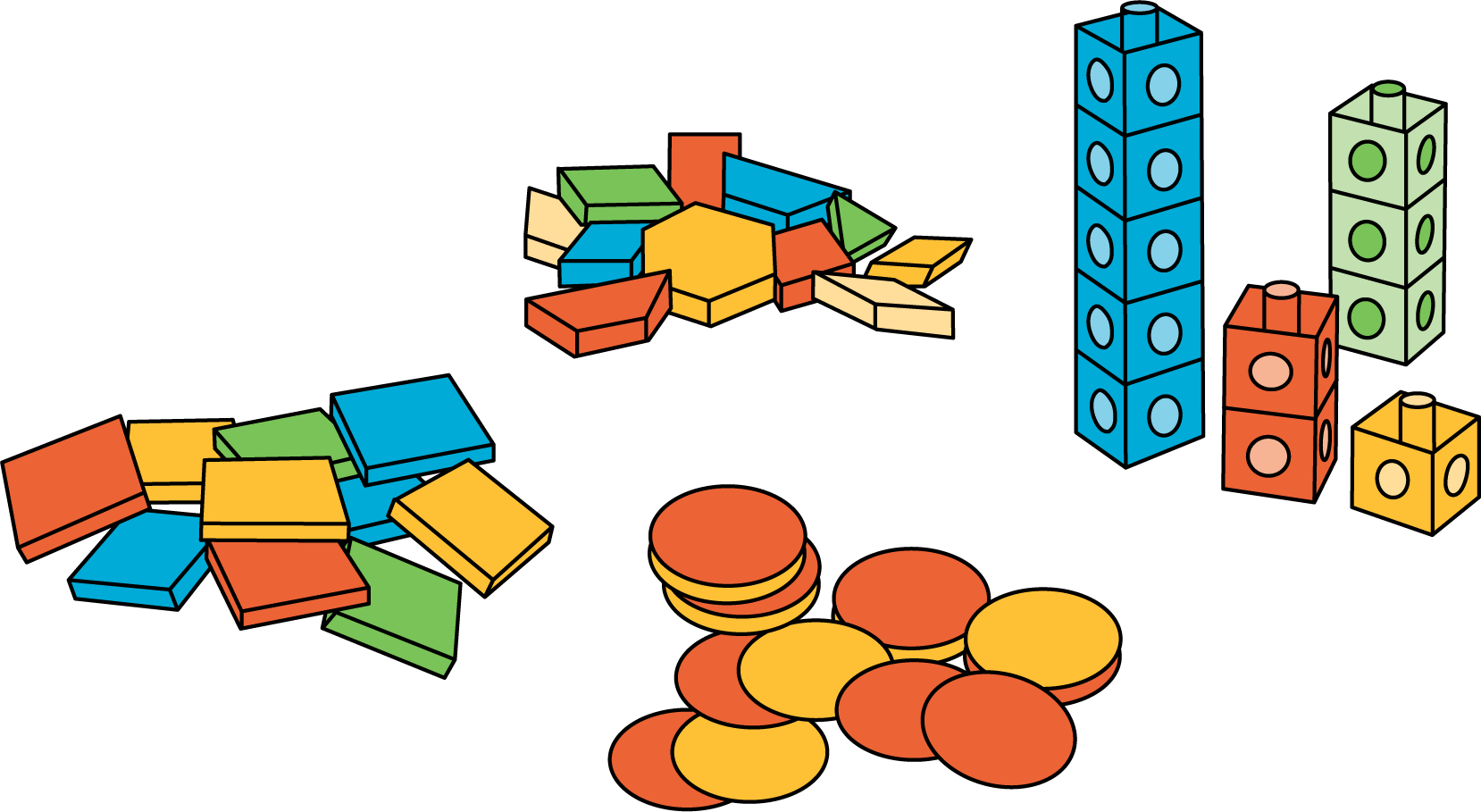Lesson 8
Represent and Solve Story Problems
Warm-up: Act It Out: Birds in a Fountain (10 minutes)
Narrative
The purpose of this warm-up is to allow students to connect language to mathematical representation, which will be useful when students represent and solve story problems in a later activity.
Launch
- Groups of 2
- Display and read the story.
- “What is the story about?”
- 30 seconds: quiet think time
- Share responses.
- Read the story again.
- “How can you act out this story?”
- 30 seconds: quiet think time
Activity
- “Discuss your thinking with your partner.”
- 1 minute: partner discussion
- Share responses.
- Choose a way to represent the story as a class.
- Read the story together.
Student Facing
8 birds were splashing in the fountain.
3 of the birds flew away.
How can you act out this story?

Student Response
For access, consult one of our IM Certified Partners.
Activity Synthesis
- “In the next activity, we will hear more stories and ask questions at the end of the stories.”
Activity 1: Questionless Story Problems (10 minutes)
Narrative
The purpose of this activity is for students to develop questions to ask about stories.
Advances: Listening, Representing
Launch
- Groups of 2
- Read and display the first story.
- “Close your eyes and picture what is happening in the story.”
- 30 seconds: quiet think time
- “Tell your partner what happened in the story.”
- 1 minute: partner discussion
- “What questions can we ask at the end of the story?”
- 30 seconds: quiet think time
- 1 minute: partner discussion
- Share and record responses.
Activity
- Repeat the steps with the second story.
Student Facing
-
8 birds were splashing in the fountain.
3 of the birds flew away.
-
Priya planted 6 flowers in the neighborhood garden at the park.
Diego planted 3 more flowers in the garden.
Student Response
For access, consult one of our IM Certified Partners.
Activity Synthesis
- Read each story with a question that students shared at the end. For example, “Priya planted 6 flowers in the garden. Diego planted 3 more flowers in the garden. How many flowers are in the garden now?”
- For each story, record the action with words and numbers and an expression. For example: “6 and 3” and “\(6 + 3\)”.
- “There are questions at the end of our stories. In the next activity, we’ll get to figure out the answers to the questions.”
Activity 2: From a Story to a Story Problem (10 minutes)
Narrative
The purpose of this activity is to understand and solve an Add To, Result Unknown story problem. This is the first time students are asked to solve a story problem, so it is important that they retell and understand the story before they try to answer the question. Crayons are an intentional choice in this activity so that students can literally act out the story. Students also have access to connecting cubes and two-color counters which they may choose to use to represent the story (MP2, MP5).
Supports accessibility for: Organization, Conceptual Processing
Required Materials
Materials to Gather
Launch
- Groups of 2
- Give students access to two-color counters, connecting cubes, and crayons.
- Read and display the task statement.
- “Tell your partner what happened in the story.”
- 30 seconds: quiet think time
- 1 minute: partner discussion
- Monitor for students who accurately retell the story. Choose at least one student to share with the class.
- Reread the task statement.
- “Show your thinking using objects, drawings, numbers, or words.”
Activity
- 3 minutes: independent work time
Student Facing
Noah had 5 crayons.
Jada gave Noah 4 more crayons.
How many crayons does Noah have now?

Student Response
For access, consult one of our IM Certified Partners.
Activity Synthesis
- “What are we trying to figure out?" (How many crayons does Noah have now?)
- “How did you figure out the answer to the question?” (I counted all of the crayons. I counted all of the counters.)
- “Noah had 5 crayons and then Jada gave him 4 more crayons. We can write that as ‘5 and 4’ or ‘\(5 + 4\)’. 5 and 4 is 9.”
Activity 3: Centers: Choice Time (25 minutes)
Narrative
- Math Stories
- Subtraction Towers
- 5-frames
- Build Shapes
- Counting Collections
Required Materials
Materials to Gather
Required Preparation
- Gather materials from
- Math Stories, Stages 1 and 2
- Subtraction Towers, Stage 1
- 5-frames, Stages 1 and 2
- Build Shapes, Stages 1 and 2
- Counting Collections, Stage 1
Launch
- Groups of 2
- “Today we are going to choose from centers that we learned previously.”
- Display center choices on student page.
- “Think about what you would like to do first.”
- 30 seconds: quiet think time
Activity
- Invite students to work at the center of their choice.
- 8 minutes: center work time
- “Choose what you would like to do next.”
- 8 minutes: center work time
Student Facing
Choose a center.
Math Stories

Subtraction Towers

5-frames

Build Shapes

Counting Collections

Activity Synthesis
- “When you choose Math Stories during centers, what do you do first with your partner? What do you do next?”
Lesson Synthesis
Lesson Synthesis
“Noah had 5 crayons. Jada gave Noah 4 more crayons. How many crayons does Noah have now?”
Display 5 counters and 4 counters.
“Kiran took out 5 counters because Noah had 5 crayons. Then he took out 4 counters because Jada gave him 4 more crayons. Has Kiran answered the question? What does he need to do to answer the question?” (He needs to count all of the counters.)
“What do the counters show from the story?” (Crayons.)
Cool-down: Unit 4, Section B Checkpoint (0 minutes)
Cool-Down
For access, consult one of our IM Certified Partners.